
NTX SC - 2016
NeuroTechX Student Clubs - 2016 Edition
Here is a Medium Post describing the 2016 Edition.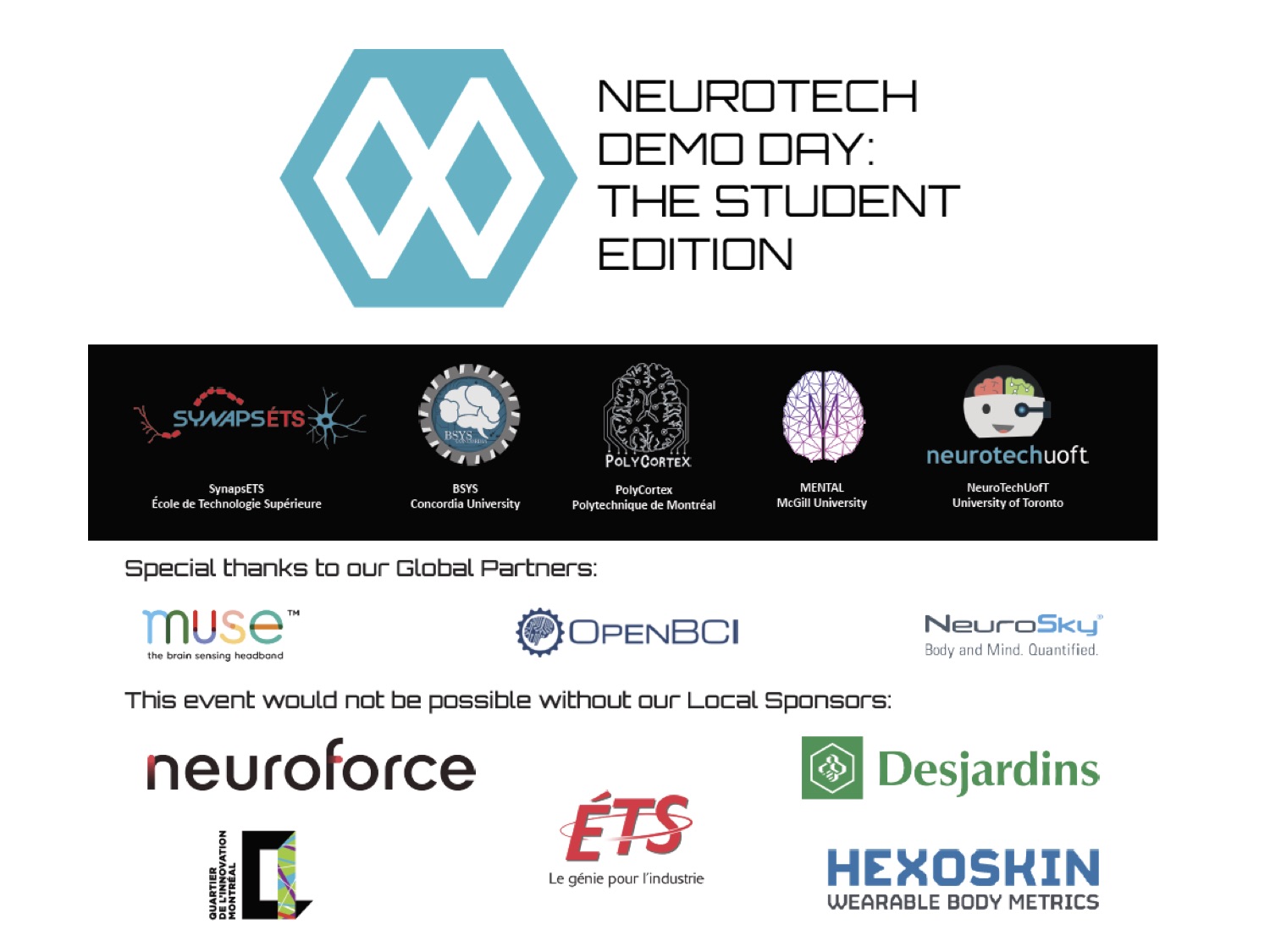
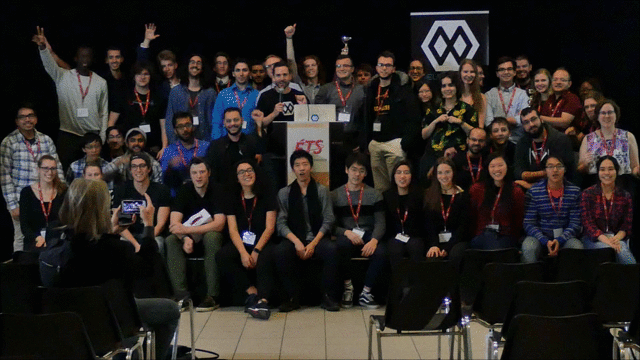
MENTAL - McGill
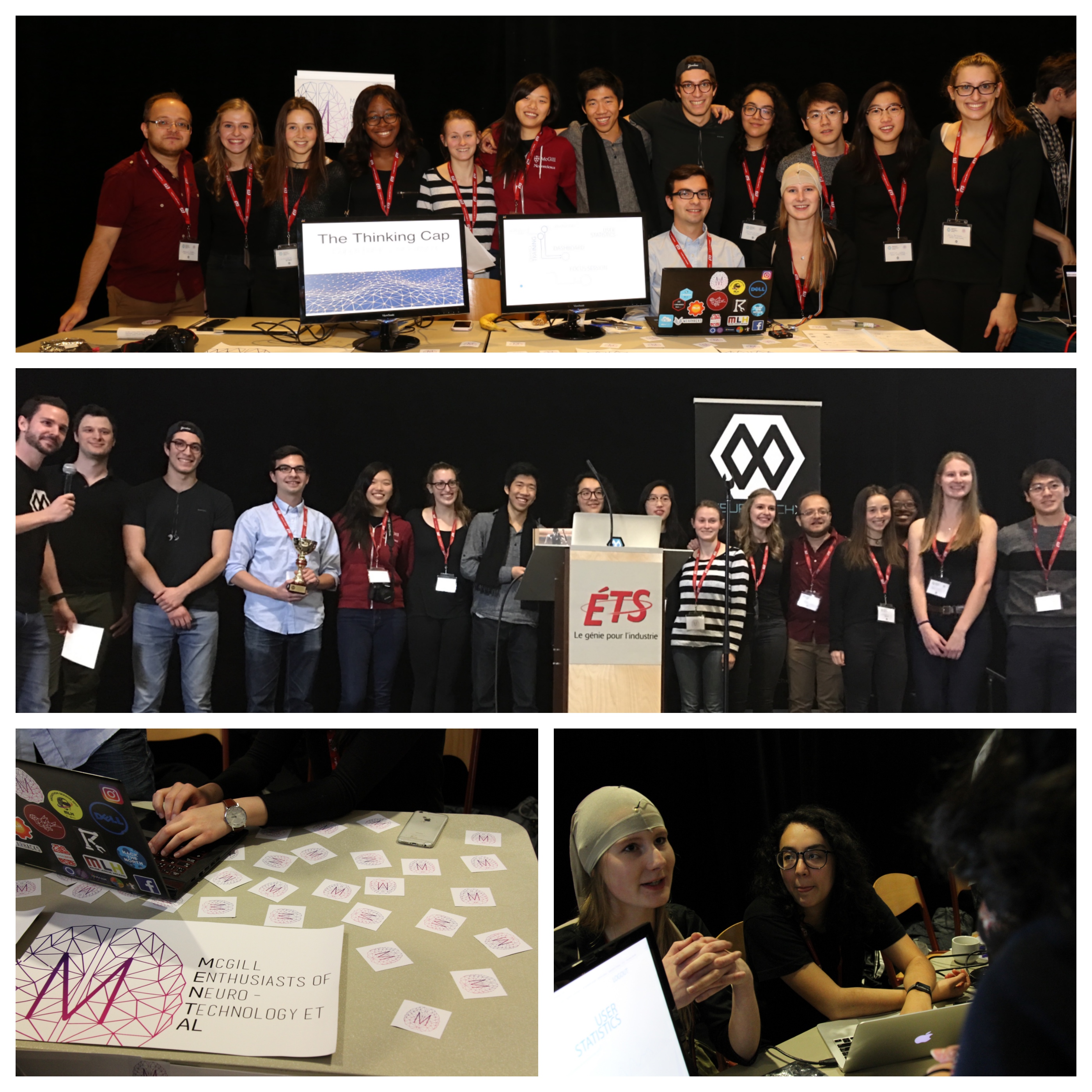
Consumer Category: The Thinking Cap
The Thinking Cap helps you to supercharge your learning. It is a truly adaptive learning analysis system for accelerated and extended flow states. It leverages neural networks to train on personalized intricacies of your EEG and helps you learn better habits so that you can create your Pieta. The Thinking Cap is grounded strongly in neuroscience, extending the benefits of academic grade research to you in a fun and interactive user experience.
DIY Category: N/A
PolyCortex - Polytechnique Montreal
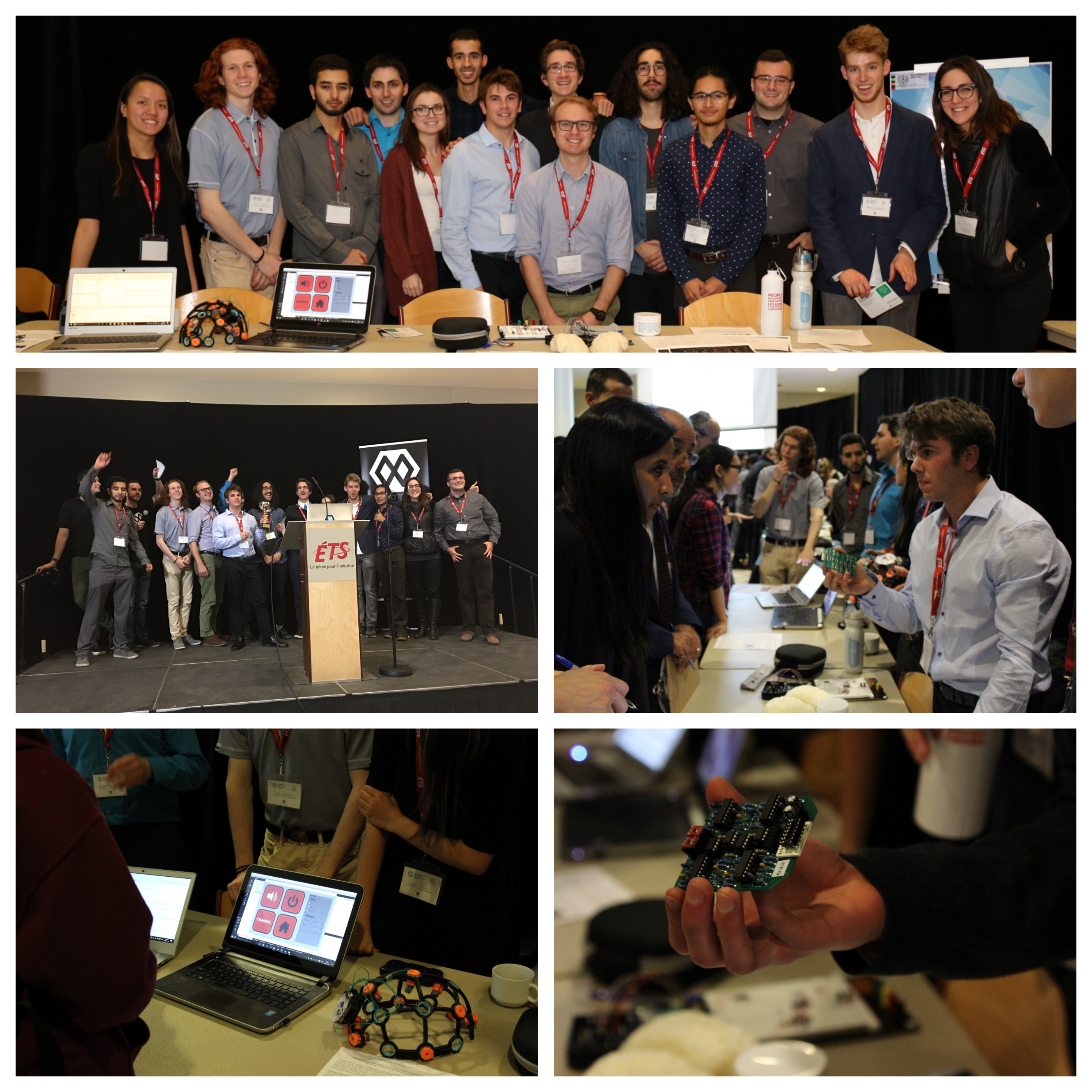
Consumer Category: Home automation based on P300 effect
PolyCortex proposed an intuitive and affordable remote control for home automation that is compatible with the OpenBCI acquisition board. The remote control is based on the P300 effect, triggered by visual stimuli, while the acquisition is performed by an homemade python-based real-time signal processing pipeline. This project would enable disabled persons to regain autonomy in their daily life.
DIY Category: Modular bio-signal acquisition board
PolyCortex proposed a modular acquisition circuit board for monitoring different bio-signals: muscular activity using Electromyography (EMG), eye movements activity using Electrooculography (EOG), cardiac activity using Electrocardiography (ECG) and cerebral activity using Electroencephalography (EEG). Currently, these signals can be acquired independently using four different boards. The purpose of this project was to create a high quality acquisition board at an affordable price, thus offering a large variety of possible applications.
SynapsETS - ETS

Consumer Category: [Insert Title] [Insert Description] DIY Category: [Insert Title] [Insert Description]
BSYS - Concordia
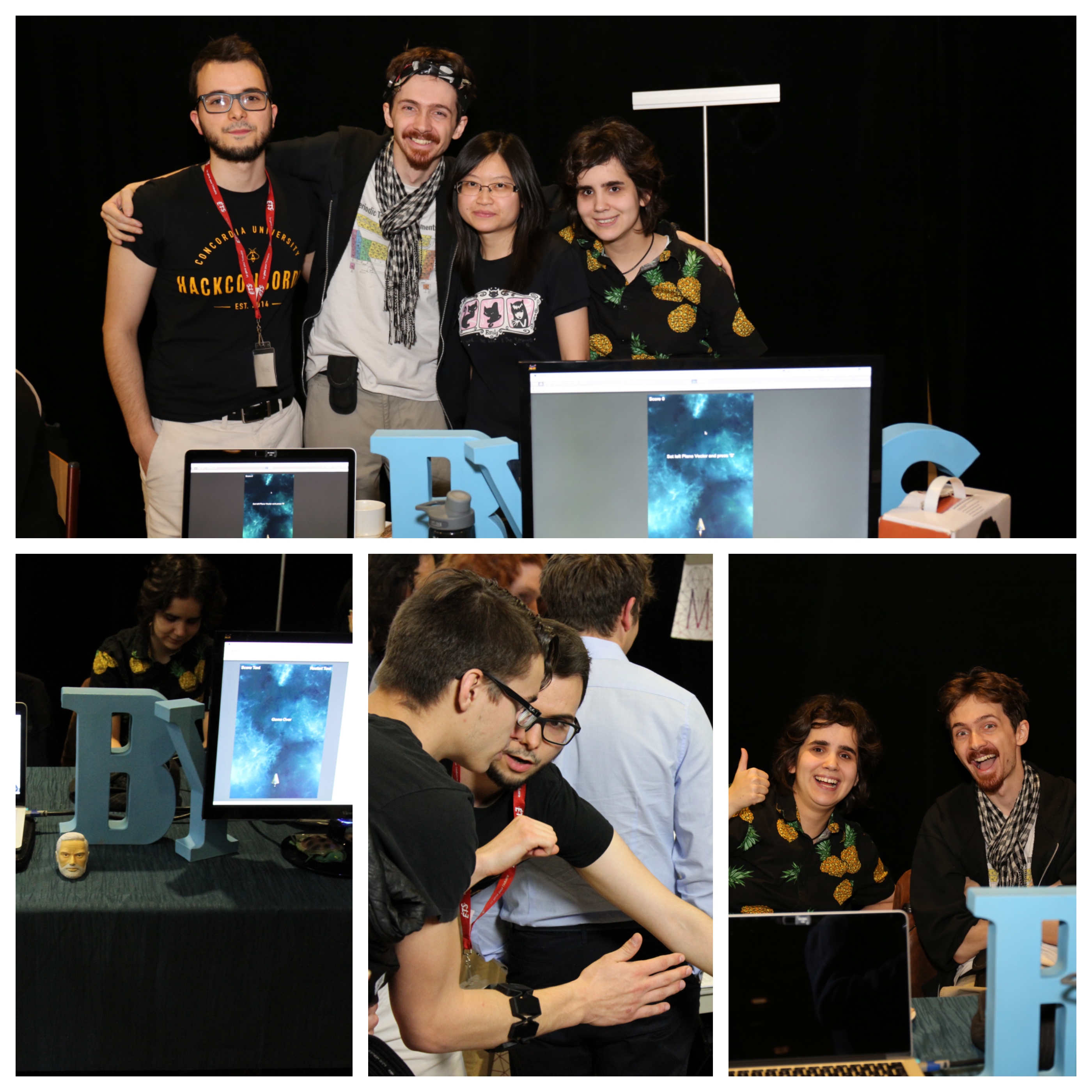
Consumer Category: [Insert Title] [Insert Description] DIY Category: [Insert Title] [Insert Description]
NeuroTechUofT - University of Toronto
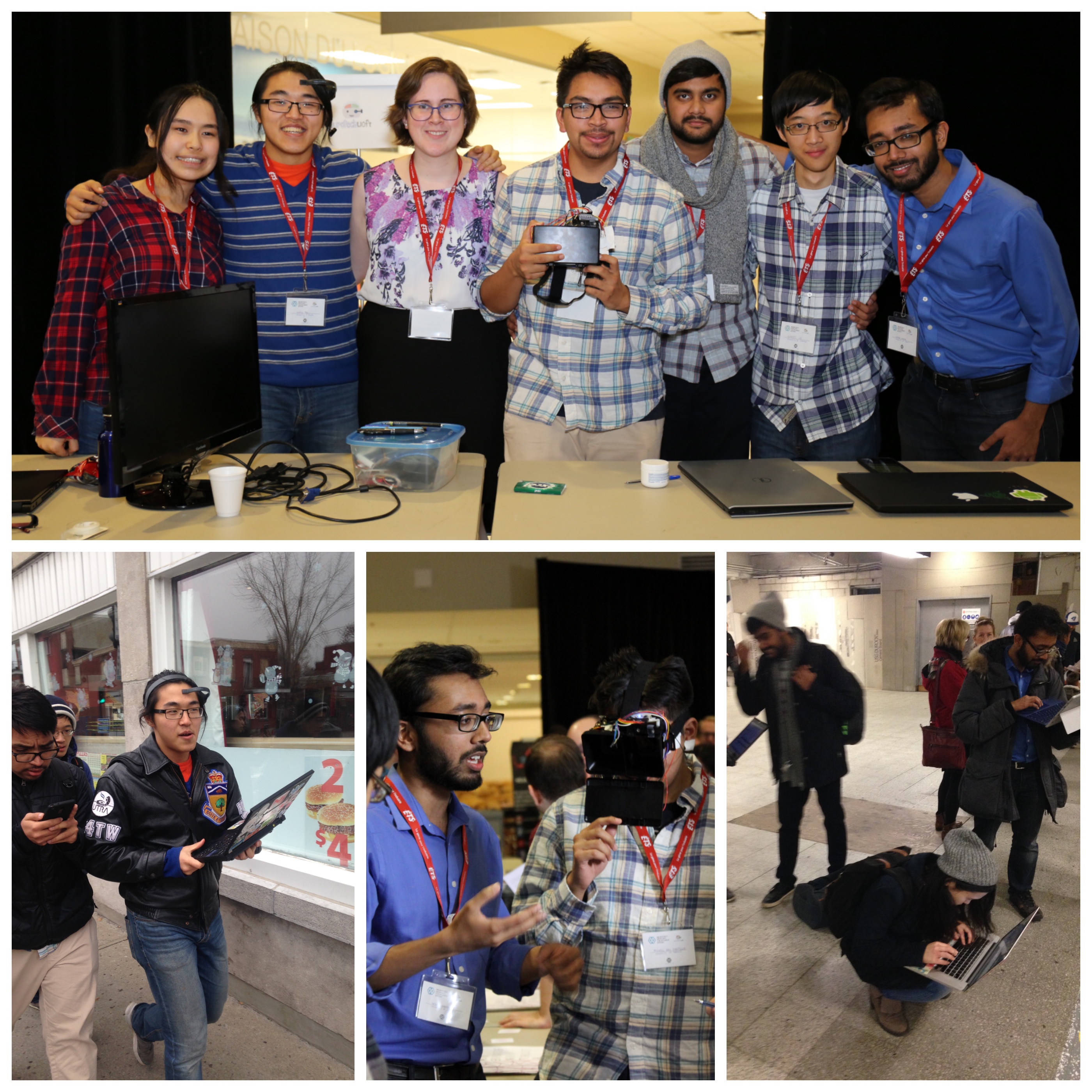
Consumer Category: VitReous
VitReous is an eye-based gesture system for virtual and augmented reality devices. Using EOG, it allows the user to perform actions such as taking pictures, looking through emails, and checking the time using eye movements (looking left, right, up, down, or blinking). Eye gestures provide intuition, speed, and privacy that is not found in hand gestures, which are awkward at best to use when the user is not sitting at a desk. The system consists of four electrodes: a pair of positive and negative leads enclosing the eyes vertically, and a pair enclosing the eyes horizontally. Vertical eye movements result in an electric potential in the first pair of electrodes, and horizontal movements result in an electric potential in the second pair of electrodes. Peak detection on a moving window is performed to identify the eye movements.
DIY Category: VitReous
In Part 2, we used the OpenBCI and four gold cup electrodes for the system. In Part 1; we attempted to obtain EEG signals using a Neurosky TGAM chip. We envisioned that the TGAM (or a similar chip, such as the ADS1298) would replace the OpenBCI and allow for a custom (and therefore more compact) circuit to be made. The chip was connected to an Arduino Mini, which translated the raw data from the TGAM into values. The values were transmitted by the HC-05 Bluetooth chip connected to the Arduino, to be read by a device paired to our circuit.
NEWS
demoday 2016